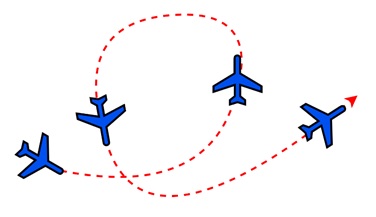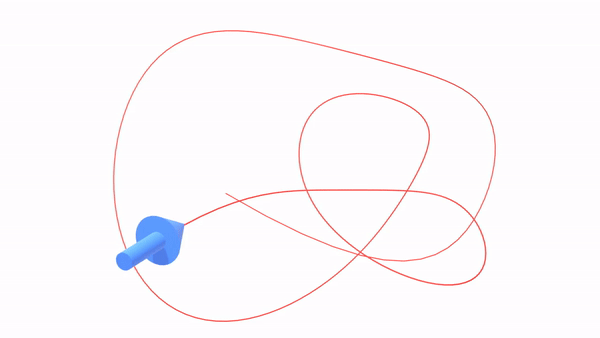
- Computer Graphics - Home
- Computer Graphics Basics
- Computer Graphics Applications
- Graphics APIs and Pipelines
- Computer Graphics Maths
- Sets and Mapping
- Solving Quadratic Equations
- Computer Graphics Trigonometry
- Computer Graphics Vectors
- Linear Interpolation
- Computer Graphics Devices
- Cathode Ray Tube
- Raster Scan Display
- Random Scan Device
- Phosphorescence Color CRT
- Flat Panel Displays
- 3D Viewing Devices
- Images Pixels and Geometry
- Color Models
- Line Generation
- Line Generation Algorithm
- DDA Algorithm
- Bresenham's Line Generation Algorithm
- Mid-point Line Generation Algorithm
- Circle Generation
- Circle Generation Algorithm
- Bresenham's Circle Generation Algorithm
- Mid-point Circle Generation Algorithm
- Ellipse Generation Algorithm
- Polygon Filling
- Polygon Filling Algorithm
- Scan Line Algorithm
- Flood Filling Algorithm
- Boundary Fill Algorithm
- 4 and 8 Connected Polygon
- Inside Outside Test
- 2D Transformation
- 2D Transformation
- Transformation Between Coordinate System
- Affine Transformation
- Raster Methods Transformation
- 2D Viewing
- Viewing Pipeline and Reference Frame
- Window Viewport Coordinate Transformation
- Viewing & Clipping
- Point Clipping Algorithm
- Cohen-Sutherland Line Clipping
- Cyrus-Beck Line Clipping Algorithm
- Polygon Clipping Sutherland–Hodgman Algorithm
- Text Clipping
- Clipping Techniques
- Bitmap Graphics
- 3D Viewing Transformation
- 3D Computer Graphics
- Parallel Projection
- Orthographic Projection
- Oblique Projection
- Perspective Projection
- 3D Transformation
- Rotation with Quaternions
- Modelling and Coordinate Systems
- Back-face Culling
- Lighting in 3D Graphics
- Shadowing in 3D Graphics
- 3D Object Representation
- Represnting Polygons
- Computer Graphics Surfaces
- Visible Surface Detection
- 3D Objects Representation
- Computer Graphics Curves
- Computer Graphics Curves
- Types of Curves
- Bezier Curves and Surfaces
- B-Spline Curves and Surfaces
- Data Structures For Graphics
- Triangle Meshes
- Scene Graphs
- Spatial Data Structure
- Binary Space Partitioning
- Tiling Multidimensional Arrays
- Color Theory
- Colorimetry
- Chromatic Adaptation
- Color Appearance
- Antialiasing
- Ray Tracing
- Ray Tracing Algorithm
- Perspective Ray Tracing
- Computing Viewing Rays
- Ray-Object Intersection
- Shading in Ray Tracing
- Transparency and Refraction
- Constructive Solid Geometry
- Texture Mapping
- Texture Values
- Texture Coordinate Function
- Antialiasing Texture Lookups
- Procedural 3D Textures
- Reflection Models
- Real-World Materials
- Implementing Reflection Models
- Specular Reflection Models
- Smooth-Layered Model
- Rough-Layered Model
- Surface Shading
- Diffuse Shading
- Phong Shading
- Artistic Shading
- Computer Animation
- Computer Animation
- Keyframe Animation
- Morphing Animation
- Motion Path Animation
- Deformation Animation
- Character Animation
- Physics-Based Animation
- Procedural Animation Techniques
- Computer Graphics Fractals
Motion Path Animation in Computer Graphics
Motion path animation shows how an object moves along a predefined path over time. It gives smooth and predictable motion. In this chapter, we will see the concept of motion path animation, discuss its uses, and provide examples to illustrate how it works in computer graphics.
What is Motion Path Animation?
Motion path animation is nothing but a technique where an object follows a defined path over time. This path can be a straight line, a curve, or a complex trajectory. Animators set the start and end points of the path, and the computer interpolates the motion in between to create smooth movement. Motion path animation is widely used in both 2D and 3D animation.
This method gives animators precise control over how an object moves in a scene. Whether it is a camera sweeping across a landscape or a character walking along a road. By defining the motion path, animators can create smooth, controlled, and predictable animations.
How Does Motion Path Animation Work?
Motion path animation begins with defining a path for the object to follow. This path can be straight, curved, or a combination of both.
The object's motion is controlled by several key components −
- Start and End Points − These shows where the motion begins and where it ends.
- Path Shape − The object can move along a straight line, a Bezier curve, or a more complex shape. The shape of the path defines the trajectory of the object.
- Timing − The speed of the object along the path is also defined. Animators can choose to have the object move at a constant speed or adjust the speed at different points along the path.
- Keyframes − Keyframes are placed along the path to define specific positions of the object at certain times. Also different interpolation techniques can be used there.
Consider a simple animation of an aeroplane moving along a path in the sky. The path is defined by the shape of the curve. The aeroplane start point is at the beginning of the path, and the end point is at the destination or the final point of the curve. As the animation progresses, the aeroplane moves smoothly along the path, following the exact path defined by the animator.

Types of Paths in Motion Path Animation
There are different types of paths that can be used in motion path animation, each suited for specific types of movements −
- Straight Paths − These are the simplest motion paths, where the object moves in a straight line from the start point to the end point. This is commonly used for objects that move in a fixed direction, such as a plane flying in a straight line or a character walking across the screen.
- Curved Paths − Curved paths allow for more complex movement, such as a ball following a curved trajectory or a bird flying in an arc. Bezier curves are often used to define these paths, as they offer smooth and flexible control over the curve’s shape.
- Complex Paths − These paths combine straight lines and curves, creating intricate movements. Complex paths are often used in 3D animation for objects like roller coasters or flying drones, where movement requires precision and variety.
Take a look at the following example. It shows the animation of an arrow along a defined path. Here it is a 3D object and the path is also in a 3D space. From the animation itself, we can get the arrow is animating on 3D zone.

Applications of Motion Path Animation
Motion path animation is used in various industries and for different purposes. Below are some common applications −
- Camera Animation − One of the common use case of motion path animation is the camera fly animation for a scene. The camera can be placed on a path to create dynamic shots, such as sweeping through a landscape or moving around a character in a scene. By defining the camera's motion path, the animator can control how the viewer sees the scene and create more immersive experiences.
- Character and Object Movement − Motion path animation can also be used for characters or objects in a scene. Characters might follow paths as they walk, run, or jump. Objects like cars, airplanes, or animals can also follow predefined paths to ensure their movement is smooth and consistent with the scene.
- Virtual Tours and Fly-throughs − It is similar to the camera fly. In architectural visualization or virtual reality experiences, motion path animation is used to create fly-throughs or virtual tours. A camera follows a path through a building or environment, allowing viewers to explore spaces in a smooth and controlled manner.
- Special Effects and Particle Systems − Motion paths are also used in special effects and particle systems. For example, fireworks might follow a path as they rise into the sky before exploding. Similarly, particle systems, such as sparks or rain, can be animated along paths to create more realistic effects.
Advantages of Motion Path Animation
Let us discuss some of the advantages of motion path animations −
- Precision and Control − The motion path animation gives the animators to control the exact movement of objects. Follow the intended trajectory. This precision is especially important in scenes where objects need to interact with each other or with the environment.
- Smooth Transitions − By using interpolation, motion path animation ensures smooth transitions between keyframes. This creates fluid motion, making the animation appear more natural and realistic.
- Efficiency − Once the path is defined, the computer handles the in-between motion, saving animators time and effort. Instead of manually adjusting each frame, the animator can focus on refining keyframes and adjusting the path for the best result.
- Flexibility − Motion paths can be adjusted and refined easily. If an object’s motion needs to be changed, the animator can modify the path without redoing the entire animation. This flexibility allows for quicker adjustments and experimentation.
Conclusion
In this chapter, we explained motion path animation and its importance in computer graphics. We started by understanding motion path animation and discussing how it allows objects to follow predefined paths over time.
We understood the different types of paths, including straight, curved, and complex paths. We also provided examples of how these paths can be used in various animations.
We also looked at the applications of motion path animation such as camera animation, character movement, and special effects. Additionally, we discussed the advantages of motion path animation, including its precision, efficiency, and flexibility.